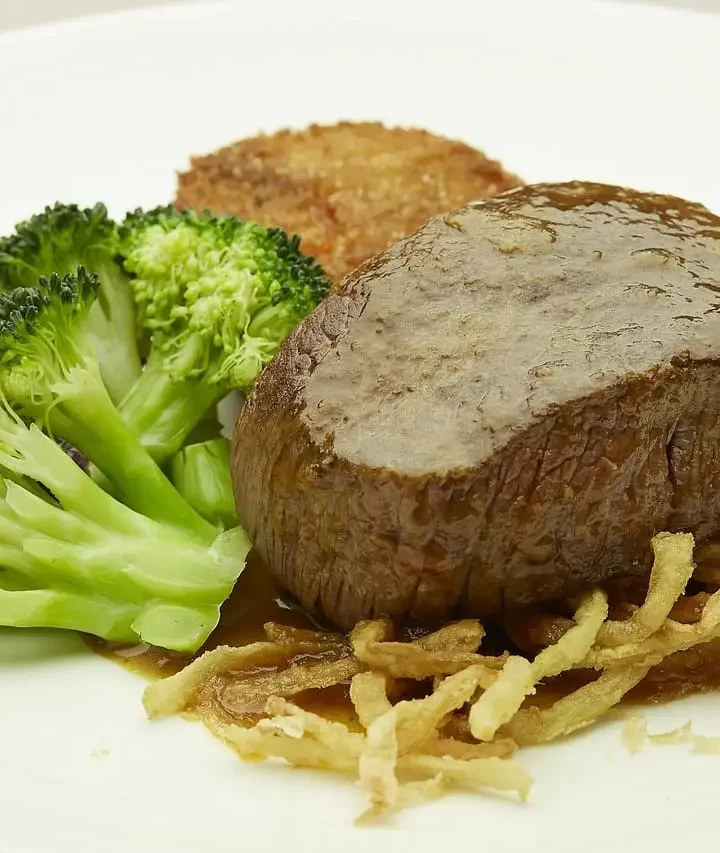There’s a palpable allure that onions, with their pungent aroma and layered structure, bring to culinary ventures. But, to ensure that they offer their prime essence when we’re cutting onions for our favorite dishes, it’s paramount to store them aptly. Onions aren’t just a kitchen staple; they’re a reservoir of taste, adding depth and richness to our meals. However, for many, onion storage remains a quagmire, often muddled with hearsays and myths.

Anatomy of an Onion and Its Storage Needs
To discern the quintessential storage environment for onions, one must first penetrate the enigma of its cellular construct. Onions are an amalgamation of water-filled cells, held together by a delicate balance. When ruptured, they release moisture, leading to faster decay.
The concept of moisture control is not merely practical advice, but a science-backed axiom in onion preservation. An onion’s predilection for absorbing moisture from its surroundings renders it susceptible to fungal activities and rot. Thus, ascertaining a dry environment becomes a non-negotiable tenet of onion storage.
The Pantry: A Traditional Storage Space
Historically, the pantry has been the sanctum sanctorum for onions. And rightly so. The trifecta of a cool, dark, and desiccated space provides an oasis for these bulbs. Such conditions deter sprouting, ensuring longevity and maintaining their robust flavor.
Yet, it’s not just about relegating onions to a dark corner. The choice of container plays an integral role. Mesh bags or baskets, known for their breathability, emerge as frontrunners, granting onions the ventilation they so dearly covet.
Refrigeration: A Contemporary Approach
Modern kitchens, armed with refrigerators, often pose the question: Can onions be refrigerated? The answer lies in discernment. Onions with a breached outer layer, or those nearing vulnerability, stand to gain from the chilly embrace of a fridge.
However, refrigeration isn’t a carte blanche. Ensuring onions are ensconced in breathable packaging prevents condensation. Moreover, it’s imperative to restrict their cold sojourn, as protracted refrigeration can render them mushy.
Storing Cut and Partial Onions
Confronted with a partially-used onion, most face a dilemma. These remnants, though diminished in stature, still proffer taste. The challenge lies in their preservation. Storing them in airtight containers, preferably glass to prevent odor transference, maintains their essence. Further, placing them in the cooler sections of a refrigerator prolongs their vitality.
However, care is mandated. The olfactory dominance of onions means they can imperiously imprint their aroma. This necessitates segregation to uphold the olfactory integrity of other edibles.
Onion Companions: Foods to Store With and Without
Onions, in their layered complexity, are not just a culinary marvel but also a challenge when it comes to storage. Their strong aromatic profile and specific storage needs can have cascading effects on their neighboring foodstuffs. Hence, understanding the dynamics of onion companionship in storage is indispensable.
The Great Potato Misconception
For eons, folklore and kitchen tales have romanticized the camaraderie between onions and potatoes. They’re often painted as perfect pantry partners, stored side by side. However, digging deeper into this age-old practice unveils a rather different narrative.
Potatoes exude moisture and release ethylene gas, a ripening agent. Onions, sensitive to this gas, are compelled into a premature sprouting spree when stored in proximity. Moreover, the moisture from potatoes can expedite the decay of onions, making this storied relationship more antagonistic than synergistic.
Friendly Neighbors: Garlic and Dry Grains
Garlic, akin to onions in its aromatic potency, emerges as a congenial companion. Both thrive in similar storage conditions—cool, dry, and well-ventilated spaces. When placed together, neither imposes its will upon the other, maintaining their individual integrity.
Dry grains, such as rice or quinoa, are oblivious to the presence of onions. Their dry nature makes them immune to the moisture concerns associated with onions. Hence, if space necessitates, storing onions alongside these grains doesn’t engender any adversarial outcomes.
Fruits to Avoid
Certain fruits, particularly apples and pears, are prolific ethylene producers. Storing them adjacent to onions not only induces premature sprouting in the bulbs but can also render the fruits overripe in a trice. It’s a lose-lose situation, making it prudent to segregate these ethylene exuberants from onions.
Herbs and Onions: A Delicate Balance
While many herbs relish the cool confines of a refrigerator, storing them alongside onions might not be sagacious. The robust aroma of onions can, at times, permeate into delicate herbs, diminishing their nuanced flavors. For herbs that are amenable to pantry storage, like rosemary or thyme, ensuring a spatial buffer from onions is advisable.
Conclusion
In the realm of onion storage, it’s pivotal to meld tradition with modernity. Recognizing the intrinsic needs of different onion varieties, and tailoring storage methodologies, ensures they regale us with their pristine flavors for extended durations. Beyond mere preservation, it’s an homage to holistic culinary practices, championing efficiency, and honoring nature’s bounty.






Leave a Reply